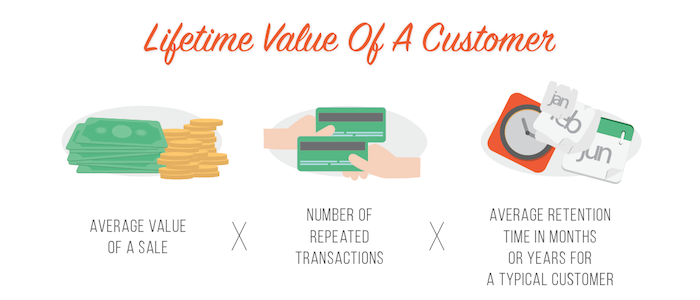As the founder of an online personal training software, I have the chance of talking to personal trainers from all around the world, multiple times each day.
One question that arises very often is “How much should I charge for my services?”.
Knowing how much to charge is extremely important. Charging too much can scare clients off, yet selling yourself cheap isn’t a solution either. There are many factors to consider such as your market (location + offer/demand), the services you offer, your expenses, your level of expertise, etc. Here’s a nice round-up of the current situation in the UK (Infographic).
Below are some guidelines that will at least point you in the right direction.

1. Know your Expenses
Personal training comes with a number of hidden expenses that many people do not take into consideration when setting rates. You’ll need to factor in the various services you use, like your fitness management software, billing software, as well as your expenses related to travel, workout gear, and ongoing certifications.
Here’s a (non-exhaustive) list of expenses to consider:
- Certifications
- Legal
- Equipment
- Payroll
- Rent
- Fuel
- Management Softwares (Payment, online training, scheduling…)
- Marketing tools: website hosting and domain renewal
- Workout gear and clothing
- Advertising
- Internet access
- Insurance
Don’t forget to add a minimal hourly rate for your time as well, at least just to cover the basics. After this simple calculation, you’ll know the very lowest amount of money that needs to come in.
2. Know your Competitor’s Rates
I’m not a big fan of basing your prices on other personal trainer rates. This is a common trap that may end up in a price war between you and your competitors, and which only benefits one person: your client.
There are much smarter ways to attract customers than to be the cheapest option.

That being said, at least knowing what your competitors charge can give you some valuable insights on the market. That knowledge may help you identify your sales points.
For example, if you’re able to offer better services at a lower price, while still maintaining a good level of profit, then a good sales point may be “Get more for less”. On the other hand, if your competitors are very cheap, you may want to advertise your services as “Premium”.
Also, if you don’t know your competitors’ prices (and services), your clients undoubtedly will. Be prepared to face their questions such as “This person charges that much for these services… Why should I stay with you?” These questions will arise (although worded more nicely, of course). Be prepared.
See also this article about some pricing secrets: How To Charge Whatever You Like Without Losing The Customer.
3. Offer Different Packages
Not everyone desires the same level of service, which is why offering different packages to your clients is recommended. No matter how excellent you are at one-on-one training, your clients will, sooner or later, move to another city, change schedule, or simply lose the need for such a Premium service.
When that happens, you have 2 choices:
- keep them as clients with a different (cheaper and less demanding) package,
- lose them altogether.
Your packages could include different levels of services, but do keep this in mind: according to some, too many options will lead to confusion and may end up in loss of potential clients. This debated yet interesting theory is called the “Paradox of choice”.
If chosen carefully, your packages will help you attract a wider client base. You’ll be able to appeal to people who are at both the high and low end of the payment scale.
Another great point about offering various packages is that you can even create a very small and cheap package, which will act as a “Lead Magnet”. That concept is brilliantly explained in this article by Till Boadella: The Tripwire Sale: How To Turn More Prospects Into Customers.
That very small and cheap package will not make you much money. It may even cost you a little. BUT, it’ll bring you some potential customers who will quickly notice how great you are as a personal trainer, and will then want to move on to your real, core offer (package).
4. Consider Alternate Income Sources
Personal trainers these days are providing more than just coaching, as many also become gateways to a variety of derived products such as supplements, fitness gear, wearables, clothes, etc.
Of course, in order for this to make sense, you’ll need to have a strong client base. But don’t get mixed up between quantity and quality. One thing that trainers are really excellent at, is building a strong trust relationship with their clients. As a trusted advisor, you’ll be in a good position to endorse some products and sell them to your clients.
Don’t be afraid of this. As long as the process is done through a completely automated referral program, you’ll have nothing to lose.
But beware: the trust your clients invest in you is only as good as the products you promote! Don’t promote a product to make money. Promote it because it’s the very best option for your client. Money will come as a by-product.
5. Know your Clients LTV (Lifetime Value)
Calculating your clients’ lifetime value is a relatively simple calculation you can make, but oh boy is it useful.
See how to calculate the lifetime value by clicking here.
If you have real, long-term data, your LTV will obviously be more reliable. If you don’t, you can try to estimate it.
LTV is the amount of money that a client, on average, will bring to your company during the entire span of his (or your) life.
Just to be safe, I prefer to limit the calculation to a period of 18 months, even if I know some clients may remain with me for longer.
Here’s how I calculate it:

Knowing your LTV is key to figuring out how much you’re willing to invest, both in time and money, to acquire a new client.
Client acquisition cost is another important metric, which is beyond the scope of this article.
6. Experiment
Markets change increasingly fast, no matter the domain.
Your clients are presented with new offers on a daily basis, which means that their expectation of what represents a good quality/price ratio changes over time.
I recommend you experiment with new prices on a regular basis. Here are 3 ways for that.
1. 1 on 1 informal survey.
This one is definitely the least accurate, but it’ll give you some interesting insights. It’s also very simple to execute: Take a minute and ask your client the burning questions: “If I increased by rates by 5$, how would you feel?” “If I reduced your monthly fee by 4$, would you be willing to pay for the whole year up-front?” Etc.
2. Online survey.
Much better option if you want your results to be reliable. Ask these same questions via an online survey platform. The most beautiful out there, although that’s not supposed to matter so much, is Typeform. Not only will your clients provide you with valid information, they’ll also have a great time doing it.
3. Analyze real data.
This last point could be the subject of an entire article (actually perhaps it should be). In brief terms, you put awesome tools such as Google Analytics and Unbounce to profit and condust A/B tests on your website to measure your clients’ real reactions to small changes like layout, services, and of course, prices.
Here’s a good article on how to do it: How to do an A/B split test with Google Analytics
7. Know your Worth
Many personal trainers are tempted to set ridiculously low rates because they believe it will help them attract new clients. The fact is that most people do not hire a personal trainer based on price alone.
Most people do not hire a personal trainer based on price alone. Click To Tweet
If you are confident in your abilities, you’ll be in a better position to market yourself at a higher rate, and therefore will not have to settle for less than what you should be making.
Setting rates appropriately is an important part of a good marketing plan. Keep these things in mind and you’ll be able to turn up a good profit, while still being affordable to a good number of people.
Anything to add to this article? Leave your comment below!




